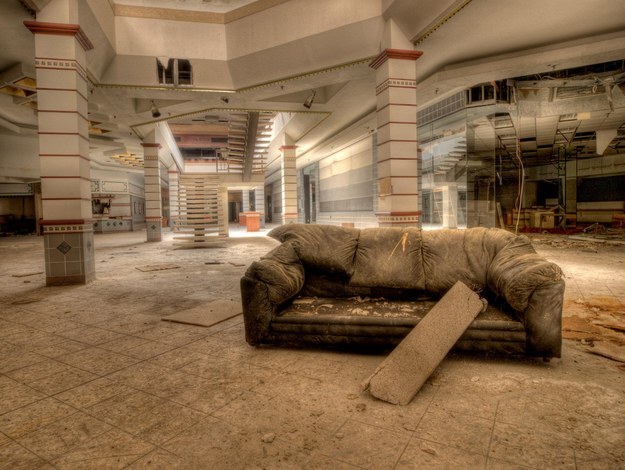Friday News Digest
Baseball season opened Monday and Justin and I relocated the office Monday afternoon to catch the game. Let’s just say it might be a rough year to be a Twins fan. They lost two out of three to the White Sox to begin the season in a stadium where the fans booed my daughter and I for daring to show up at a game wearing Twins jerseys (which was extra gratuitous since the Sox weren’t even playing the Twins – stay classy ChiSox). I’m going to miss the home opener for the first time since Target Field opened, but with a foot of snow scheduled for tomorrow, who knows if they will even be able to play. Just another spring in Minnesota.
Enjoy the week’s news.
- Yesterday I was able to share the concept of shared space with a very large group of officials in the Fayetteville, Arkansas area. (And as a side note, I wasn’t expecting that area to be so beautiful. I really hope to get invited back.) Many thanks to Estele Masangkay for describing the concept in her blog post on Reclaiming Sidewalks.
Yet another solution is the concept of shared space, as discussed by StrongTowns.org . The idea is to basically drop the system of stop and gos, and the prioritization of cars over other users of public space and streets. The author uses the example of an open field parking lot where pedestrians and cars mingle. He asks, why is there almost always no casualty in settings like these? The answer is because both the pedestrians and the drivers were expecting and looking out for each other’s movements. While some might point out the disadvantage to drivers in this setting, the author also points out that there is no waiting periods for the drivers and general public safety is prioritized over a few seconds’ hurry.
- Our good friend Kevin Klinkenberg has rebooted his blog (as well as gotten married) and given it some really great focus, such as this piece about the reality of declining federal revenues. I’m looking forward to having Kevin on the podcast soon to talk about these ideas and more.
The public has expressed itself for years now that it has very little appetite to raise revenues (except at the high end of incomes or for very specific local projects) and increasingly federal dollars will have to be used to meet its own substantial obligations.
Does this mean doom and gloom for cities and our infrastructure? Not at all. But, it does mean a structural change and it will force a re-prioritization. As the trough of federal dollars dissipates, we'll collectively become much more focused on return on investment and efficiency. That bodes well for projects that enhance walking, biking and transit (in most cases).
- So many people I meet find it hard to comprehend that we will ever abandon all the miles of stroad, acres of parking, millions of square feet of retail and all the single family homes we built in financially unproductive ways. If it can’t be maintained, it won’t be, and little of what we have built since World War II is financially viable. We’re going to walk away from most of it -- less will be saved than you might imagine. The math just doesn’t work. If you are one of those people that can’t envision what this will look like, be prepared to have your eyes opened. Absolutely surreal.

- The #BlackFridayParking event we did last Thanksgiving ended up being far more impactful than I had ever thought it would be. I’m working on taking those photos and making good use of them, as well as planning for another event this November. It is nice to see the ridiculous financial waste that parking represents seep into the collective consciousness, although there are more people out there than me who think this is simply stating the obvious.
A pair of forthcoming studies by Garrick and several of his UConn colleagues examine the economic and sociological impacts of parking trends in six U.S. cities from 1960 to 2000. They conclude that some car-centric cities forfeit more than a thousand dollars per parking space per year in potential municipal revenues by using land for parking rather than more lucrative alternatives. The researchers also found that minimum parking requirements inhibit development and exacerbate traffic by placing incentives on car use rather than on walking and cycling.
- Lots of people reflexively complain about government employees being unproductive, unmotivated and overly-insulated while lots of other people reflexively defend government employees as underappreciated, undercompensated and stifled by a political class that uses them as defenseless punching bags. Both sides have some basis for their beliefs, which is why it was so heartening to see Politico cut through the reflexive reactions to report on one of the chief underlying problems: the need to modernize the civil service system. While most of the private sector has gone away from the WW II model of military structure and hierarchy in their organizational charts, governments have largely clung to it, bypassing the numerous benefits of team problem solving within a flatter organizational chart. Great read.
The report identifies several problems with the way the federal workforce is managed, from recruitment to retirement. One major issue, the authors write, is that the current system was designed when most government jobs were clerical. Now, nearly two-thirds of government jobs are “knowledge-based” and administrative, but the government can’t compete with the private sector for the nation’s best talent.
“Unable to compete for and retain some of the high-end skills and lacking the capacity to handle many critical day-to-day tasks, the government often has to look to outside contractors for the intellectual capital and know-how that is needed,” the report said. “There also is an absence of clarity and consequence regarding individual and organizational performance. Top performers seldom receive sufficient rewards, poor performers are rarely fired or demoted, and managers are not held accountable for how well they manage employees or the outcomes of the work they oversee.”
- David Brooks of the New York Times told the story of Shavar Jeffries, candidate for Newark mayor, and how he personifies the changes going on in our cities today. Political structures deeply rooted in national political infrastructure are being challenged by those who see the need for our cities to lead a revolution in this country. I’m one of them. We’re strictly a non-partisan organization, but at the local level, I personally am interested only in leadership, reform and innovation. Political party is simply a red herring.
Then there is the split, which we’re seeing in cities across the country, between those who represent the traditional political systems and those who want to change them. In Newark, as elsewhere, charter schools are the main flash point in this divide. Middle-class municipal workers, including members of the teachers’ unions, tend to be suspicious of charters. The poor, who favor school choice, and the affluent, who favor education reform generally, tend to support charters.
These contests aren’t left versus center; they are over whether urban government will change or stay the same.
- Earlier this year I had the opportunity to do a Curbside Chat and a workshop in Rochester, MN (the other Rochester – shout out to my friends in New York). While I’m not a huge fan of their entire “Destination Medical Center” plan for a large scale infusion of cash into reworking the city (I favor a more incremental approach where inevitable mistakes are minor learning experiences, not a potential inter-generational albatross), I’m hoping this all works out for them. They are holding a design competition for one site in downtown Rochester and it would be great to see someone with fresh ideas come forward with a plan (complete with Strong Towns implementation). Be warned, however, that pretty much every consulting firm in the Midwest has been drawn to the Island of the Sirens that is Rochester today. If you are interested in submitting something unique and want some implementation ideas, get a hold of me and I’ll help you brainstorm.
- A few weeks ago I called county engineering departments a dinosaur waiting for a meteor. They sit snugly into stroad category, the bulk of their investments serving neither an interregional need nor a local wealth building capacity. This week Steven Dornfield in Minnpost called for a change in municipal consent laws (rules that allow cities to veto certain transportation projects) and a reduced role for counties in planning transportation projects. On the former I’m not so sure, but on the latter I totally agree. County-led improvements – for transit or otherwise – tend to be stuck in the 1950’s mode of moving people from the suburbs to the central city instead of connecting productive and successful places.
If state lawmakers hope to improve transit and keep pace with other metro areas, they need to reexamine the municipal consent law that enables cities to hold regional transit project hostage until they get their way.
Lawmakers also need to dramatically reduce the role of counties in planning and developing transit projects, consolidate these responsibilities in a regional body like the Met Council that is charged with looking out for the best interests of the entire region and then hold that agency accountable for results.
- This week was April Fools Day which meant the web was full of really bad jokes posing as news articles. One of the few good ones was by Brendon Slotterback who, through some witty prose, demonstrated how bizarre the amount of money being spent on the Old Economy Project that Refuses to Die (St.Croix Bridge) and how far that money could have gone in doing really productive things to improve people’s lives.
Projects targeted for the redirected funding include an expansion and bypass of the Macy’s skyway bottleneck in Minneapolis, which carries 28,000 trips per day, or 150% of the bridge’s forecasted traffic, support for the Nicollet Mall rebuild project, which carries20,000 pedestrians per day, or 110% of the bridge’s forecasted traffic, an upgrade to the dynamic signage for Metro Transit’s blue line, which carries 30,000 trips per day, the build-out of an 11-line arterial BRT system, which would carry 137,000 trips per day, and sidewalk resurfacing in downtown Stillwater near that one really popular ice cream place.
Anderson-Johnson said that the approximately $100 million remaining balance after expenditures on the other projects would be used to implement congestion-based tolling on the I-94 bridge over the St. Croix to improve traffic flow.
Enjoy your weekend, everyone. See you back here Monday for more.
 The latest from Chuck Marohn – MoneyHall – is set to be released in May. Sign up to be notified when it is available on Chuck’s site, MoneyHall.org, and while you are there, check out Thoughts on Building Strong Towns, a great primer on Strong Towns thinking.
The latest from Chuck Marohn – MoneyHall – is set to be released in May. Sign up to be notified when it is available on Chuck’s site, MoneyHall.org, and while you are there, check out Thoughts on Building Strong Towns, a great primer on Strong Towns thinking.
